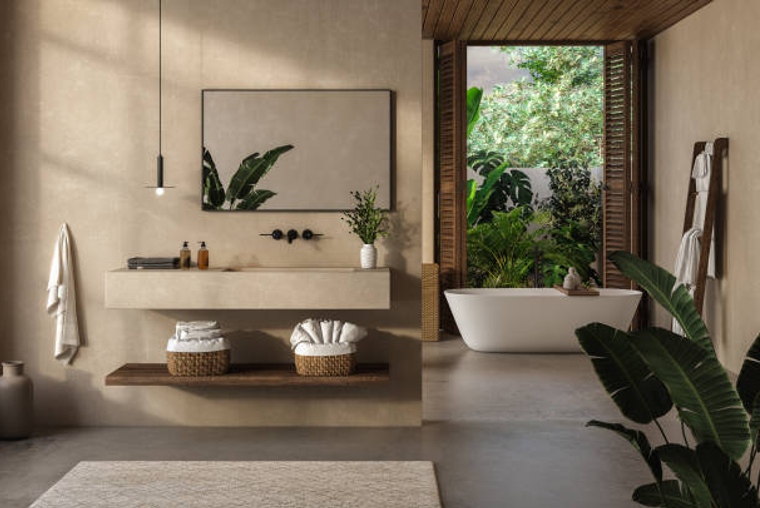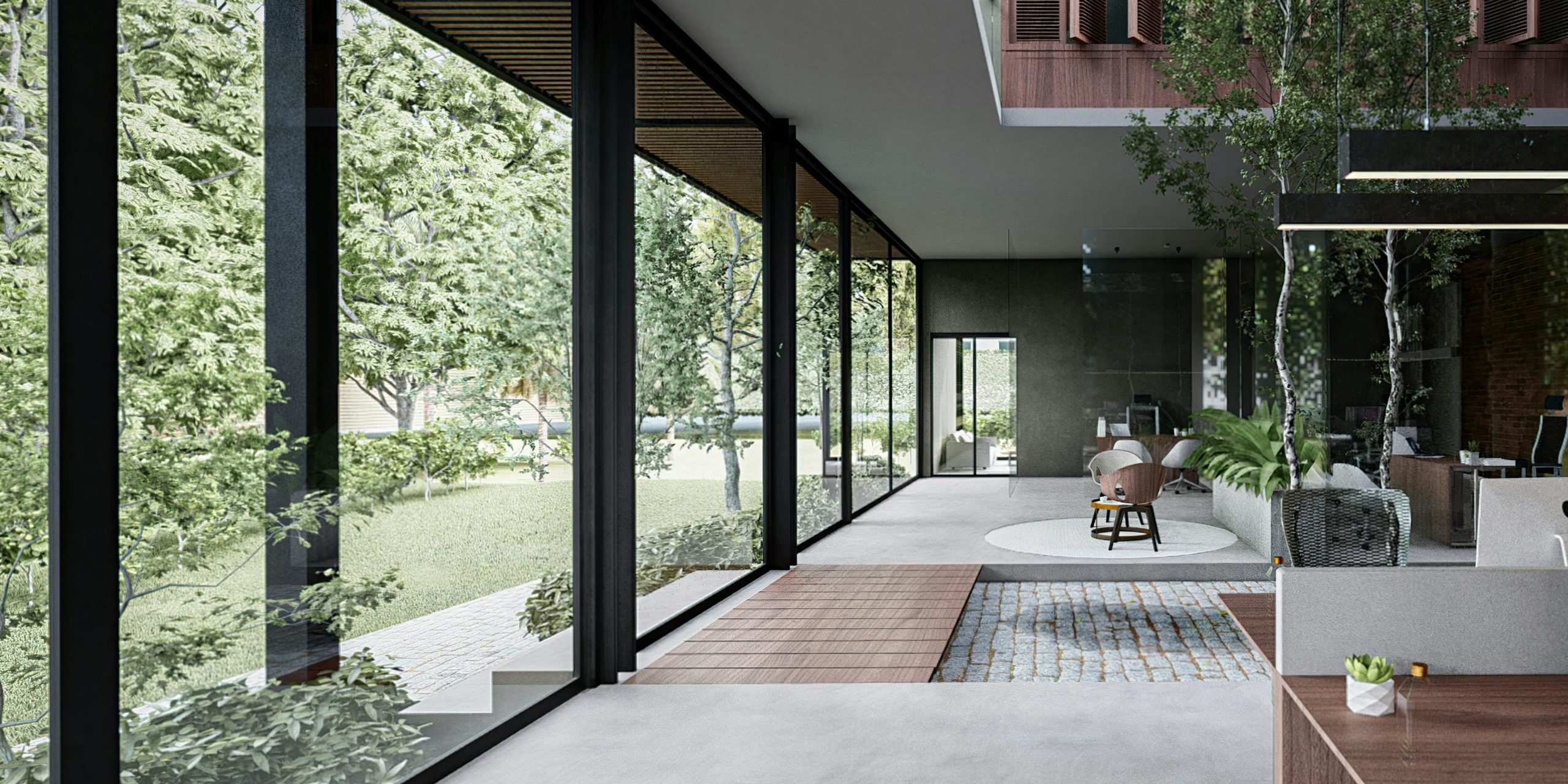Transforming Urban Spaces into Healthy and Sustainable Environments
Biophilic design is a proposal that, beyond being a mere style or trend, corresponds to a way of understanding architectural development towards a more sustainable and mindful future.
- Its ultimate goal is to reconnect people with their environment by introducing elements of nature, both visual and non-visual, into the design of buildings and interiors.
- It is especially useful in cities where people spend most of their time in enclosed spaces and often lose contact with natural surroundings.
A relatively new concept for an ancient attraction
Biophilia is a concept developed in the late 20th century, described as “the urge to affiliate with other forms of life.” It is an innate, ancestral, and universal affinity that reveals the profound bond that connects us to nature.
The ever-increasing development of cities has deepened the disconnection between humans and nature, leading to serious discrepancies with an environment vastly different from the one we evolved in as a species. This disconnection has the potential for negative impacts on health, well-being, and quality of life for individuals.
To counteract this effect, biophilic design incorporates natural elements into architecture and interior design projects, developing a proposal that goes far beyond simply introducing plants and green spaces.
While it might seem like a new trend, the presence of natural elements in environments increasingly dominated by human-made objects has been a constant throughout human history.
Biophilic Design and Well-being
Multiple studies show a correlation between contact with nature, both in outdoor and indoor environments, and better health and well-being. These investigations often focus on the impact of natural visual environments as a beneficial factor in physical and mental health, such as reducing stress.
One of the recurring elements is beautiful as a pleasurable visual stimulus for the mind. Although it is a subjective value, most people, regardless of their background and culture, find aesthetic stimuli in nature, particularly beautiful: a sunset, the flight of a flock of birds, or a vast forest are images commonly associated with pleasant experiences.
In fact, it seems proven that the mere presence of plants in indoor environments can have positive effects on individuals’ performance, health, and well-being.
However, this way of understanding design and architecture goes far beyond including plants in our homes or offices, as there are other decisive resources that can be used to establish that connection between the interior and nature.
Thus, biophilic design introduces elements that appeal to all our senses: sight, but also smell, hearing, and touch… To enjoy relaxing sounds, fresh scents, in open spaces that offer a visual connection with nature.
Spaces for Living and Working Aligned with Biophilic Design
These are the top 10 points for reconnecting an artificial environment with nature through biophilic design:
- Visual connection with nature: Provide views to the outdoors, especially if natural environments such as gardens, forests, mountains, or water bodies are visible. Additionally, design spaces for contemplation and relaxation such as courtyards, terraces, or balconies.
- Integration of vegetation: Interior plants and gardens not only purify the air but also add a touch of freshness, fragrance, and vitality to the rooms. Vertical gardens and terrariums that connect the interior and exterior are particularly interesting, creating continuity through design and architecture.
- Maximize natural light: Large windows and skylights allow abundant sunlight to enter, improving interior lighting and regulating the natural cycles of the inhabitants of the house. Atmospheric lighting should recreate a warm and relaxing environment, allowing residents to adjust the light according to their needs and moods.
- Natural materials and textures: Use materials such as wood, stone, wool, and other natural elements in the construction and interior design of the house to create a sense of warmth and connection with nature, conveying authenticity to its occupants. Different textures, whether soft, rough, polished, etc., will stimulate the senses creating a feeling of shelter.
- Organic shapes and patterns: Reference natural figures or designs with curved and imperfect shapes, both in buildings and in interior furniture.
- Colors inspired by nature: Use earth tones, ochres, and terracottas, but also vibrant colors like cobalt blue and emerald green that add dynamism and energy to the space depending on the rooms.
- Air quality: Space distribution should facilitate the circulation of natural air, taking advantage of natural currents to maintain a healthy environment. Temperature or humidity are subtle elements that we do not see, but we feel.
- Presence of water: With its relaxing sound and cool atmosphere, water can act as a balm evoking nature. Incorporate water elements such as fountains, ponds, or small waterfalls to create a unique and dynamic environment.
- Recreate natural systems and processes: Flexibility and adaptation by designing versatile spaces that can meet the changing needs of residents depending on the seasons, allowing the integration of natural elements and the modification of the environment according to individual preferences. Nature has order within chaos, and knowing how to recreate it is essential to rebuild the environment.
- Sustainability: Incorporate sustainable practices and technologies in the design and construction of buildings such as energy efficiency, rainwater capture and reuse, or the use of recycled materials to minimize environmental impact and promote a more environmentally friendly lifestyle.

